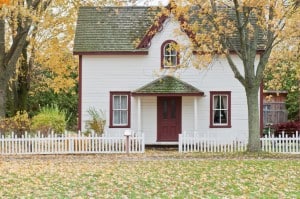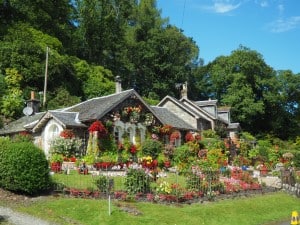Bees are an integral part of our ecosystem. Their existence allows a diverse culture of plants, foliage, and crops to continue thriving. There are actually thousands of species of bees recorded and one of these species is the masonry bees or mason bees as they are more commonly known. They are solitary bees and also burrowing insects that are very commonly seen patrolling your gardens. Their burrowing tendencies have given pause to many homeowners of the bee’s tendency to cause damage.
Do masonry bees cause damage? Yes, they do. The holes they create may cause some problems in a structure and allow moisture to penetrate into the material and cause further damage. This is especially true if more than one nesting hole can be seen adjacent to one another in a small area.
This species of bees may be solitary but they can live adjacent to others of their same species. They are considered to be a more effective pollinator compared to honeybees but their nesting habits have made a few brows raised with regards to either keeping them or deterring them. Let’s dig into this topic more in this article.
Table of Contents
Human Damage

It is essential to mention that the female gender of most, if not all, bee species possess the stinger. Their male counterparts are either only there to mate or to protect the nest. Mason bees are no different, it is only the female mason bee that can sting.
However, these gentle critters are not very well known for stinging since they are very docile and tempered. Reports have shown that they sting only when threatened. The male mason bee is another story altogether. He is more aggressive than the female even though he doesn’t possess a stinger.
Unless you are allergic to bee venom, the chances of human damage are slim to none. This type of bee is very chill and do not attack to defend themselves. In fact, the main purpose of the stingers that the female species possess is an ovipositor. So, the only way for a female mason bee to sting you is if you really, really, really provoke it to defend itself.
See our other articles for more information: https://schoolofbees.com/can-you-be-allergic-to-bee-stings/ and https://schoolofbees.com/what-happens-if-you-cant-get-a-bee-stinger-out/.
Property Damage

Mason bees are known to tunnel in soft mortars or any masonry material, hence their name. They prefer to burrow in naturally occurring holes or gaps in trees. Unlike a carpenter bee which can gnaw holes into the wood, a mason bee cannot ‘drill’ as well through wood. They do know how to tunnel in reeds or any soft masonry material found in and around man-made structures.
That being said, you can already guess what kind of damage a mason bee can do to a structure. Since this type of bee tends to tunnel in soft mortars to build their nest, if more than one nest is present then gaps have been created in the structure. These gaps can become more of a problem in the future, especially if moisture had seeped into the holes.
The damage can be even more prominent if the structure invaded by a mason bee is made of wood since wood can be very porous and tends to absorb moisture if the holes are not treated immediately. The best thing to do is to locate where the mason bees are nesting and retreat the area to prevent future mason bees from using that site as nesting grounds.
Other than the fact that mason bees tunnel through soft mortar, there is no other major damage this friendly creature can do to a structure.
See our other article on what Bees and Yellow Jacket can chew through: https://schoolofbees.com/what-can-bees-and-yellow-jackets-chew-through/.
Garden Damage

Upon exhausting my research resources, I’ve found out that mason bees do little to no garden damage at all. But some garden owners who find a few flowers that look pretty abused says that it is due to mason bees. I did some digging around to find where this idea came from. Apparently, mason bees are more clumsy than their honeybee cousins. These mason bees sort of flop into flowers to collect both pollen and nectar. Unlike the honeybees who lightly descend on the flower.
Whereas the honeybees approach the flower in a very gentle fashion and then gathers pollen on their hind legs to take back to the hive, a mason bee is an opposite. Mason bees would plop onto the flower, muck around it while picking up pollen on their body. Both the honeybee and the mason bee visits more than one flower in one flight but since the mason bee tends to just plow into each and every flower it visits, it leaves behind quite a mess of pollen each time. This makes them a very effective pollinator in the eyes of many.
You might think that mason bees leave behind a streak of destruction in its wake but that is where you’re mistaken. I may have overdone the description of how they have been accused of causing damage to the garden in the previous paragraph. But, you have to keep in mind that they are pretty small in size. Smaller than a bumblebee to be exact. So whatever destruction they leave behind are pretty minuscule and might not even be visible to the naked eye for some.
You can prevent the minimal garden damage that mason bee does by calling an expert to locate and relocate the mason bees that are residing near your home. You can also opt for some chemical treatments like aerosols, sprays, powders, and liquids. But I highly recommend to just leave these docile bees alone as the damage they do is very very minimal.
Getting To Know The Mason Bee
We’ve talked about how docile mason bees are and that they cause none to very slim damage to structure, gardens, and humans. Let’s get to know them better in this section of the article.
Mason bees are also known as masonry bees and mortar bees because of their nesting ground choice. This type of bee species is said to be nature’s spring pollinator. They are considered as both hardworking and gentle and is among the easiest to keep of the 21,000 species of bees around the world.
They practically nest in pre-made or pre-drilled holes or small gaps in structures or just naturally occurring gaps in trees and plants. The way they build their nest is very interesting and since this is a solitary species of bee, a nest is managed by only one female. The male’s purpose is to just mate right after he locates a suitable female. The female will then go through the notion of gathering pollen to make bee bread for her eggs to sit on.
Typically, the female will collect pollen and deposit it into a nest where she will then lay a single egg then gathers mud to create a wall as a partition for the next egg she will lay. She will repeat this process until the nest is filled with eggs and then closes the hole with mud once again. She leaves the nest and her eggs to hatch and mature into adult mason bees.
Eggs that are near the entrance of the nest tend to be all males and the female ones are located further back in the hole. Mason bees have no sense of the first-in, first-out policy because the male eggs which are located near the entrance and is the last ones to be deposited hatch first. The male would stay close to the nest waiting for a female to hatch and mate with her. From there the cycle repeats.
You might mistake this bee as a fly because of their coloring. Mason bees belong to the Osmia genus of the Megachilidae family and they mostly have a greenish or bluish color to them. Slightly smaller than a bumblebee, mason bees are slowly becoming popular when it comes to pollinating orchards and nut farms.
The species that are most used as a support or alternative for the European honeybees in the commercial pollination industry are O. lignaria, O. bicornis, O. cornuta, O. cornifrons, O. ribifloris, and O. californica. These species can be transported easily by either transporting their nesting block whole or if the beekeeper collects the mason bee cocoons they can transport the cocoons to different locations.
Mason Bees: How To Remove Them, Should I Remove Them?
Now that you have met the mason bee, you are now wondering of ways on how you can remove them, prevent them from tunneling in your home’s structure or maybe you are just wondering if removing them is really necessary.
As mentioned in one of the previous section of this article, removing mason bees can involve some chemical treatment or you may just need to call an expert who will then relocate the mason bees currently residing in your home to a different nest, if possible. However, I would strongly suggest that you just leave them be. Because, personally, I think that they cause more good than harm. Unless you are allergic to bees then removing them should be a priority.
If you are planning to just let them be, there are ways where you can encourage the existing mason bees in your vicinity to nest elsewhere. I prefer creating an alternative nesting place for these friendly creatures by drilling holes in wooden blocks and then lining them with paper or using some small tubular pipes to mimic nesting holes that the mason bees will use. These alternative nesting sites for bees are often referred to as “bee hotels” and designs for them can be found on the net easily.
And because of the research I did, I also found that there are a few individuals who have dedicated their time into creating these bee hotels that they now sell for the specific purpose of promoting keeping mason bees. There are also some who are willing enough to provide a sort of tour into their mason beekeeping sites to provide the aspiring beekeepers or curious individuals with useful information about mason bees and how to keep them.
Because mason bees are so easy to keep, add to that the fact that they are very effective in pollinating plants (because they transport dry pollen rather than wetting the pollen and sticking it to their hind legs just like their honeybee cousins do), they are being considered as an alternative pollinator for orchards and other crops.
Since the statistic of nearly 40% of insect pollinators are in danger of just disappearing came out, more and more have been paying attention to the preservation of the bee species and how each individual can help in the process.
After creating your bee hotel, your next step would be to treat the area of the structure where you have spotted mason bee activity before. This will discourage further nest from being created and preserve the integrity of the structure.
Conclusion
To cap everything off, mason bees may cause some damage if they are left nesting in structures as they tend to tunnel their way through soft mortar and materials. These tunnels will then be exposed to both moisture and heat which will then cause the material to crumble especially if there are more than a few mason bee nests located. People with bee allergies may want to employ experts when dealing with mason bees to prevent any accidents from happening. Your garden actually would benefit more from these spring pollinators since mason bees are very effective in transporting pollen. The damages these gentle bees can be easily remedied by making sure that your structure is treated properly and by providing an alternative nesting area for the mason bees.
Aspiring beekeepers can start their journey to beekeeping with mason bees because they are among the easiest to take care of. You don’t really need to buy expensive equipment or tools to start. In fact, you’ll be spending the majority of your time watching mason bees fly in and out of your bee hotel than taking care of them. Many parents who want to introduce beekeeping to their kids can start with this species and then work their way up to the honeybees as their kids get older.
It’s a win-win situation for both the humans and the bees if you really think about it. The bees get the protection and care they need, especially now that their numbers have gone down to an alarming level and the humans get their crops and orchards pollinated effectively.
Featured image courtesy of Wikipedia, attributed in the image caption.
